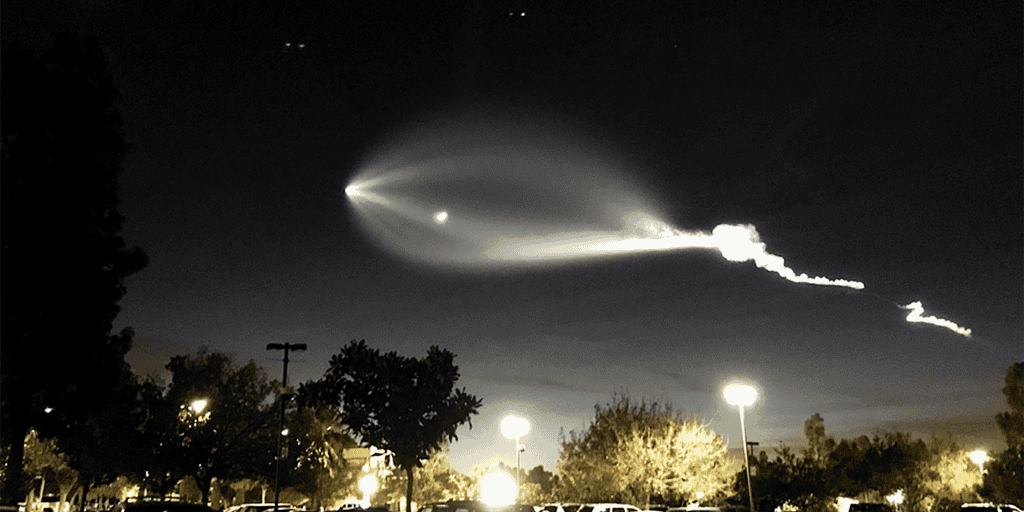The glowing ball of light that was hovering over Los Angeles last week was not aliens. Neither it was a Nuclear alien UFO from North Korea. But it looked so odd that people took it as alien UFO. It looked like a lovely and otherworldly pearly teardrop glowing against the darkening sky. It was just a cloud of frozen crystals of water and exhaust making the path of a SpaceX rocket launch.
What happened on the evening of Friday, December 27, was that SpaceX rocket Falcon 9 was launched from Vandenberg Air Force Base in California, carrying 10 telecom satellites for Iridium. The first stage of the rocket zoomed through the upper atmosphere; it passed through an area of dry cold air. The engines, which were burning rocket propellent and liquid oxygen, left a trail of exhaust that froze quickly in the freezing conditions.
Nuclear alien UFO from North Korea pic.twitter.com/GUIHpKkkp5
— Elon Musk (@elonmusk) December 23, 2017
The result was just like the condensation trails or contrails that trace the path of airplanes across the sky. Meteorologist Marshall Shepherd explained that the contrail looked so luminous because though the sun appeared to have set about half an hour earlier on the ground, the rocket was at such a high altitude that the sun was still shining on the condensing cloud. It was a cloud that was glowing with daylight, lighting up the darkened sky.
The glowing teardrop shape also highlighted the separation of the first and second stages of the rocket, which can be seen adjusting in the sequential pictures. The strange light in the sky was so odd that many people in the area called the authorities. That prompted a local fire department to state that the lights were merely due to the rocket launch. Seeing the reaction of people was not surprising. The recent furor around UFOs which has formed the imagination of people, contrails at sunset can often look quite strange.
This is not the first time that people have noticed strange streaks left by spacecraft. NASA rockets can leave trails as they make course adjustments in the atmosphere. One eagle-eyed viewer noticed that years ago, during one of the occasions that the space shuttle was docked on the ISS, a contrail appeared beneath the station as the shuttle vented excess water.

